24 Authentic Northern European Fish Dishes Worth Tasting
Northern European fish dishes reflect a rich maritime heritage deeply connected to coastal landscapes and culinary traditions.
Cold waters surrounding Nordic regions produce exceptional seafood with remarkable flavor profiles and nutritional benefits.
Fishermen have long relied on sustainable fishing practices passed through generations, creating unique preservation and cooking techniques.
Regional cuisines transform simple marine ingredients into complex, hearty meals that warm souls during long winter months.
Traditional recipes showcase intricate relationships between local communities and marine environments, highlighting cultural identity through carefully crafted preparations.
Delicate yet robust cooking methods honor the natural qualities of fresh catches from pristine waters.
Culinary expertise transforms ocean harvests into remarkable gastronomic experiences that celebrate regional ingredients.
You won't want to miss these 24 incredible northern European fish dishes that will tantalize your taste buds:
Essential Northern European Fish Dishes to Savor
Cold waters yield fish dishes rich in flavor and history. Smoked, pickled, or poached, these essential recipes celebrate the best of northern seas and lakes.
Loimulohi
Loimulohi represents Finland's ancient salmon-smoking technique that transforms fresh fish into a smoky delicacy prepared directly over an open fire.
Nordic fishermen traditionally cook salmon or rainbow trout vertically on wooden planks near hot coals, creating a unique flavor profile enhanced by simple seasonings like sea salt, lemon juice, honey, or juniper berries.
Precise placement near flames determines cooking duration and intensity of smokiness.
Wood planks impart additional subtle wood notes to the fish's natural taste.
Fishermen carefully monitor flame proximity to achieve perfect texture and doneness.
Sea salt and herbs maximize the salmon's rich maritime flavor.
Generations of Finnish families have practiced this traditional outdoor cooking method.
Fire-roasted salmon emerges tender, with complex smoky undertones that showcase Finland's rustic culinary heritage.
Gravlax
Gravlax represents a luxurious Nordic seafood delicacy featuring raw salmon transformed through salt-curing and dill seasoning.
Scandinavian fishermen originally developed this technique by burying salmon near high tide lines to ferment, creating a distinctive preservation method.
Maritime workers discovered this technique centuries ago as a practical way to prevent fish spoilage during long voyages.
Modern gravlax uses refrigeration instead of traditional burial techniques, ensuring food safety and consistent flavor profiles.
Salt, sugar, and fresh dill remain critical ingredients in the curing process.
Salmon must be extremely fresh and high-quality for successful preparation.
Professional chefs and home cooks alike prize this technique for its remarkable flavor concentration.
Nordic cuisine continues to celebrate gravlax as a signature culinary tradition with deep historical roots.
Salmon Soup (Lohikeitto)
Lohikeitto is a luxurious Nordic salmon soup that warms cold Scandinavian winters with its rich, creamy broth bursting with fresh salmon chunks.
Finnish kitchens craft this hearty soup by slowly simmering tender salmon fillets with diced potatoes and carrots in a velvety base of cream and fish stock.
Generous sprigs of dill add a fragrant herbal note that complements the fish's delicate flavor.
Sea salt and white pepper provide subtle seasoning that highlights the salmon's natural taste.
Professional Finnish restaurants often feature this classic dish as a signature comfort food during chilly months.
Sweden shares a similar version called laxsoppa, reflecting the culinary connections between Nordic countries.
Lohikeitto represents more than a meal - it embodies Finnish coastal traditions and seasonal cooking techniques.
Finnish Fish Soup (Kalakeitto)
Kalakeitto is a hearty Finnish fish soup brimming with fresh seafood and garden vegetables simmered in a creamy, flavorful broth.
Finnish fishermen pioneered this robust soup as a nourishing meal during cold Nordic winters.
Salmon, trout, pike, and perch form the protein base of this traditional dish.
Diced potatoes, carrots, onions, and leeks create a rich vegetable foundation for the soup.
Butter and cooking cream add luxurious depth to the broth.
Dill, allspice, bay leaves, salt, and pepper season the soup with classic Nordic flavors.
Families across Finland enjoy this versatile soup as a satisfying lunch or dinner option.
Herring And Potatoes (Sild Og Poteter)
Sild og poteter are Norway's iconic cold seafood and potato plate featuring herring as its star ingredient.
Norwegian fishermen traditionally prepared this simple summer dish with fresh herring caught directly from coastal waters.
Pickled herring fillets form the protein base, complemented by boiled buttered potatoes and sliced beets.
Crisp onions and fresh dill add sharp flavor complexity to the plate.
Creamy sour cream drizzled over the top balances the fish's salty profile.
Each ingredient contributes a distinct texture and taste, creating a harmonious Nordic culinary experience.
Regional variations might include different herring preparation methods or additional garnishes.
Summer gatherings frequently showcase this classic Norwegian meal as a refreshing and satisfying option.
Salmon Sushi
Sake nigiri sushi blends Norwegian salmon with traditional Japanese rice-molding techniques, creating a delicate seafood delicacy that introduces newcomers to raw fish cuisine.
Skilled sushi makers hand-press vinegared rice into compact ovals, carefully layering thin salmon slices on top for a smooth, clean-tasting bite.
Japanese dining etiquette recommends consuming this single-piece sushi in one mouthful, enhancing the fish's subtle flavors.
Norwegian salmon provides a richer, slightly fishier profile compared to maguro nigiri, offering a distinctive taste experience.
Diners typically enjoy sake nigiri with complementary condiments like soy sauce, wasabi, or pickled ginger.
Fresh, high-quality salmon determines the nigiri's overall quality and taste.
Salt and vinegar notes balance the fish's natural oils, creating a harmonious flavor combination.
Small portions make sake nigiri an ideal starter for sushi beginners seeking a mild introduction to raw seafood.
Plaice Fillets (Rdspttefilet)
Stegt flæsk med persillesovs highlights Danish culinary traditions with crispy, golden-brown pork belly slices served alongside creamy parsley sauce.
Home kitchens and restaurants across Denmark feature this beloved national dish that combines simple, rustic ingredients with remarkable flavor.
Traditional preparation involves pan-frying thick pork belly cuts until perfectly crisp and rendering fat for extra richness.
Danish families often serve the dish with boiled potatoes, creating a hearty meal that connects generations through shared culinary experiences.
Fresh parsley sauce provides a bright, creamy complement to the rich, salty meat.
Regional variations might include slight tweaks to sauce consistency or potato preparation.
Restaurant menus frequently showcase this classic comfort food, reflecting Denmark's love for straightforward, satisfying meals.
Summer and winter tables alike welcome this iconic Danish specialty that transforms basic ingredients into something truly memorable.
Silakat
Silakat are Finnish pan-fried herring fillets bursting with maritime flavor and crisp texture.
Baltic herring forms the core of this traditional Nordic seafood dish where whole fish or fillets get dredged in seasoned flour.
Pepper, salt, and sometimes lime zest create a zesty coating before frying in hot oil or butter.
Sea salt adds extra crunch to the golden-brown herring fillets.
Mashed potatoes, pickled cucumbers, and lime wedges complement the fish's rich taste.
Variations include pickling the fried herring with vinegar, carrots, bay leaves, and onions.
Finnish coastal communities have long enjoyed this simple yet satisfying meal.
Regional restaurants and home kitchens continue to prepare silakat as a beloved seafood staple.
Stekt Fisk
Stekt fisk are golden-brown Swedish fish fillets pan-fried in butter with a crispy exterior and delicate interior, representing a classic Scandinavian seafood preparation.
Nordic home cooks prefer smaller fish like herring or cod for this simple yet flavorful dish.
Seasoned flour creates a light, protective coating that ensures even browning and seals in moisture.
Melted butter transforms the fish into a rich, tender centerpiece with a subtle nutty flavor.
Braising techniques guarantee a succulent texture that melts in you mouth.
Creamed vegetables like peas or carrots complement the fish's richness.
Boiled potatoes serve as a traditional side dish that balances the meal.
Swedish families enjoy stekt fisk as a quick, satisfying dinner that highlights fresh, local ingredients.
Pickled Herring (Sursild)
Sursild represents a Norwegian pickled herring delicacy steeped in holiday tradition and winter culinary heritage.
Norwegian families prepare this signature dish by layering salted herring slices with onions and aromatic spices like allspice, black peppercorns, and mustard seeds in glass jars.
Vinegar-based liquid gets boiled and poured over the carefully arranged ingredients, creating a tangy preserved fish preparation.
Supermarkets across Norway sell ready-made sursild jars for convenient home consumption.
Norwegians typically enjoy this pickled fish during Christmas celebrations as a breakfast item or dinner side dish.
Fresh bread with butter and additional onion slices often accompanies the herring.
Winter meals frequently feature sursild as a traditional protein component.
Regional variations exist depending on specific Norwegian family recipes and local ingredient preferences.
Icelandic Fish And Chips (Fiskur Og Franskar)
Plokkfiskur blends traditional Icelandic seafood preparation with a unique twist on classic fish and chips, featuring delicate tempura-like fish fried in rape seed oil using spelt flour batter.
Fresh Icelandic ocean-caught fish forms the core of this national favorite, ensuring exceptional quality and flavor.
Spelt flour creates a lighter, crispier coating compared to traditional English versions that typically include beer.
Organic Icelandic potatoes complement the fish, roasted instead of deep-fried and garnished with chopped parsley for added freshness.
Each component highlights Iceland's commitment to pure, high-quality ingredients and minimal processing.
Roasted potatoes emerge crispy outside and creamy inside, perfectly balancing the light, crisp fish.
Texture and freshness define this maritime-inspired dish that reflects Iceland's coastal culinary traditions.
Seafood lovers appreciate this simplified yet sophisticated interpretation of a classic comfort food.
Danish Fish Cakes (Fiskefrikadeller)
Danish fiskefrikadeller are golden-brown seafood patties that capture Denmark's coastal culinary heritage through their simple yet flavorful preparation.
Fishermen and home cooks traditionally craft these crispy fish cakes using fresh white fish like cod or haddock, blended with eggs, milk, and finely chopped onions.
Breadcrumbs and herbs enhance the mixture's texture and aroma, creating a delicate balance of flavors.
Salt and pepper provide subtle seasoning that complements the fish's natural taste.
Some regional variations include adding salmon or shrimp for extra richness.
Danes often serve these patties with remoulade sauce, fresh lemon wedges, and a side of boiled potatoes.
Families enjoy fiskefrikadeller as a quick weeknight meal or during festive gatherings.
Popular throughout coastal communities, these pan-fried fish cakes represent a beloved staple in Danish cuisine.
Bergensk Fiskesuppe
Bergensk fiskesuppe stands as Norway's signature seafood soup, blending fresh Norwegian fish with creamy broth and seasonal vegetables in a single harmonious bowl.
Bergen fishermen developed this hearty maritime recipe generations ago as a practical way to use ocean catches and local ingredients.
Pollock or salmon form the protein base of this nutritious soup, complemented by carefully chopped onions, carrots, leeks, and celery.
Sour cream adds richness while vinegar provides subtle tangy complexity to the broth.
Pickled purslane introduces a unique herbal note that distinguishes this regional specialty from other fish soups.
Salt, pepper, and a touch of sugar balance the soup's intricate flavor profile.
Traditional preparations sometimes included fish bones for extra depth, though modern versions typically omit this practice.
Each spoonful represents Bergen's coastal culinary heritage, connecting seafaring traditions with contemporary Nordic cuisine.
Pan-Fried Plaice (Stegt Rdsptte)
Stegt rdsptte are crispy Danish pan-fried plaice fillets featuring golden-brown rye flour coating and delicate fish meat.
Danish fishermen traditionally prepare this coastal specialty with fresh plaice caught in Nordic waters.
Salt and pepper season the fish before coating it in rye flour for extra crunch.
Olive oil and butter create a rich pan-frying environment that transforms the fish into a golden delicacy.
Fresh lemon and chopped parsley add brightness and subtle herbal notes to the dish.
New potatoes commonly accompany the fish as a classic side dish.
Regional coastal communities have perfected this recipe over generations, celebrating their maritime culinary heritage.
Inlagd Sill
Inlagd sill or pickled herring dominates Swedish festive cuisine with its tangy, complex flavor profile and deep cultural significance.
Scandinavian families traditionally prepare this iconic seafood specialty during major holidays like Midsummer, Christmas, and Easter celebrations.
Fishermen carefully clean and salt fresh herring before marinating it in a signature blend of vinegar, sugar, chopped onions, and carrots.
Aromatic spices including allspice, bay leaves, and crushed peppercorns enhance the fish's rich taste and texture.
Swedish households serve this dish as an essential appetizer or side item during festive gatherings.
Regional variations exist across different parts of Sweden, with each area adding unique ingredients or preparation techniques.
European immigrants have spread this culinary tradition to North American communities with strong Scandinavian roots.
Generations of families continue to enjoy inlagd sill as a cherished connection to their Nordic heritage.
Persetorsk
Persetorsk emerges as a distinctive Norwegian seafood specialty from Bergen, featuring salt-cured cod transformed through a meticulous preparation process.
Bergen fishermen developed this unique dish by pressing cod in a sugar-salt solution, creating an intensely flavored fish with remarkable texture.
Bacon fat provides a crispy exterior when frying the prepared fish pieces, adding rich depth to the protein.
Delicate green peas and shallots complement the main ingredient in a creamy sauce made with creme fraiche and vinegar.
Fresh dill adds brightness and traditional Norwegian herbal notes to the complex flavor profile.
Locals traditionally serve persetorsk as a hearty main course during winter months.
Coastal communities in western Norway have preserved this generations-old recipe, celebrating their maritime culinary heritage.
Restaurants in Bergen continue to feature this classic dish, maintaining its cultural significance.
Stekt Strmming
Stekt strömming represents Sweden's beloved fish delicacy crafted from herring fillets seasoned with salt, white pepper, and fresh dill.
Fishermen traditionally coat these delicate fillets in flour and breadcrumbs before frying them in butter until achieving a crisp, golden-brown exterior.
Swedish families often serve these savory fish with creamy mashed potatoes and tangy lingonberry jam.
Red onions and pickled cucumbers complement the fish's rich flavor profile.
Vinegar, sugar, and allspice can create an additional marinade that enhances the herring's natural taste.
Nordic coastal regions have perfected this cooking method over generations.
Maritime communities consider stekt strömming a staple seafood dish.
Fried Pickled Herring (Stegte Sild)
Fried pickled herring combines crispy texture with tangy Danish maritime traditions, featuring fresh herring fillets carefully coated in breadcrumbs and lightly fried to golden perfection.
Scandinavian kitchens transform this fish through a delicate process of breading and quick frying that creates a satisfying crunch.
Denmark's coastal regions have perfected this preparation method for generations, highlighting the herring's natural flavors.
Salt and subtle sweetness balance the fish's inherent brininess, making each bite complex and memorable.
Traditional preparations often include quick pickling in a mild vinegar solution with subtle spice undertones.
Small chopped onions or herbs frequently accompany the dish, adding freshness and depth.
Regional variations might include different spice blends or serving styles, reflecting local preferences.
Inkokt Lax
Inkokt lax stands as a classic Swedish seafood delicacy featuring gently poached salmon bathed in a delicate marinade of water, white wine vinegar, vegetables, and aromatic spices.
Swedish kitchens traditionally prepare this elegant dish by simmering salmon until perfectly tender and allowing it to cool completely overnight.
Cold salmon emerges with a silky texture and subtle flavor profile that pairs beautifully with creamy fresh dill mayonnaise and bright lemon slices.
Fresh herbs such as dill, thyme, or rosemary can enhance the salmon's natural taste.
Regional variations might include additional sauces like tartar or hollandaise to elevate the dish's complexity.
Scandinavian dinner tables frequently welcome this refined seafood preparation as a summer favorite.
Restaurants and home kitchens alike celebrate inkokt lax as a sophisticated yet simple culinary tradition.
Plukkfisk
Plukkfisk represents a comforting Norwegian seafood casserole featuring flaky white fish simmered with potatoes in a creamy bechamel sauce.
Western Norwegian coastal communities traditionally prepare this hearty dish using fresh cod or pollock, carefully blending tender fish pieces with soft potatoes and caramelized onions.
Butter and white pepper enhance the mild flavor profile, while crispy bacon adds a savory crunch to the creamy mixture.
Norwegians typically serve plukkfisk with rustic flatbread, creating a satisfying meal that reflects the country's maritime culinary heritage.
Regional variations allow for slight modifications in ingredients and preparation techniques.
Families pass down recipes through generations, maintaining this classic comfort food's cultural significance.
The dish perfectly balances simplicity with rich, warming flavors that capture Norway's coastal cuisine.
Fiskeboller
Fiskeboller are Norwegian white fish dumplings blending minced fish, flour, eggs, and milk into soft, round spheres that define comfort food for Norwegians.
Cod, haddock, or pollock form the primary protein base for these mild-tasting fish balls.
Traditionally served in thick white sauce, fiskeboller accompany steamed carrots and boiled potatoes for a complete meal.
Curry powder and shrimp often enhance the basic bechamel sauce, adding complexity to the otherwise subtle flavor profile.
Norwegians consider this dish a reliable dinner staple across households.
Kitchen preparation involves carefully mixing ingredients to create uniform, smooth fish balls.
Each dumpling requires precise technique to maintain consistent texture and shape.
Regional variations highlight subtle differences in seasoning and sauce preparation.
Lutefisk
Lutefisk is a provocative Scandinavian seafood delicacy featuring dried whitefish processed with lye, creating a unique gelatinous texture that challenges traditional fish preparation methods.
Scandinavian immigrants, particularly in Minnesota, embraced this pungent dish that originated between Sweden and Norway, each country claiming cultural ownership.
Norwegian and Swedish communities traditionally serve lutefisk during winter holiday celebrations with accompaniments like boiled potatoes, mushy peas, and bacon.
Lye treatment transforms the fish into a jellylike consistency that some find appealing while others consider controversial.
Whitefish species determine the intensity of lutefisk's distinctive flavor and aroma.
Generations have passed down preparation techniques, maintaining this unusual culinary tradition.
Cooking requires careful handling to prevent disintegration of the delicate fish.
Immigrants brought lutefisk recipes to North America, preserving their cultural heritage through this distinctive seafood preparation.
Jarlsberg Cod (Jarlsberg Torsk)
Jarlsberg torsk represents a classic Norwegian seafood creation combining fresh cod with rich Jarlsberg cheese in a creamy, aromatic preparation.
Norwegian coastal fishermen traditionally prepared this hearty dish using locally caught cod as the primary protein.
Garlic and white pepper provide subtle seasoning that enhances the fish's natural flavors.
Jarlsberg cheese melts beautifully over the fish, creating a golden, crispy top layer.
Milk and cream bind the ingredients, producing a silky, luxurious sauce.
Salt balances the dish's complex flavors, ensuring each bite remains balanced and satisfying.
Baking transforms the ingredients into a comforting meal that highlights Norway's seafood culinary traditions.
Beetroot Salmon (Rdbetgravet Laks)
Rdbetgravet laks radiates Norwegian seafood mastery, transforming salmon through an ingenious beetroot-infused curing process.
Traditional Norwegian fishermen developed this technique to preserve fresh salmon using simple ingredients like beetroot, sugar, salt, and aromatic herbs.
Grated beetroot mixed with sugar, lemon and orange peels, dill, and optional aquavit creates a vibrant marinade that gently cures raw salmon fillets.
Marinating for 48 hours infuses the fish with deep, earthy flavors while maintaining its silky texture.
After curing, cooks carefully scrape off the marinade and slice the salmon into delicate, thin pieces.
Norwegian cuisine serves these beautiful salmon slices alongside classic accompaniments like crisp flatbread and zesty horseradish cream.
Rich cultural heritage and resourceful preservation methods shine through this elegant dish that celebrates Norway's coastal culinary traditions.
Fresh ingredients and minimalist preparation highlight the natural beauty of Nordic seafood.
What Types of Fish Are Most Commonly Used in Northern European Fish Dishes?
Northern European fish dishes prominently feature a variety of freshwater and saltwater fish that thrive in the region’s cold waters:
What Are the Typical Methods of Cooking Northern European Fish Dishes?
Northern European culinary traditions employ a range of cooking techniques that highlight the natural flavors and textures of fish:
These methods reflect the region’s focus on simplicity, freshness, and maximizing the natural taste of high-quality fish.

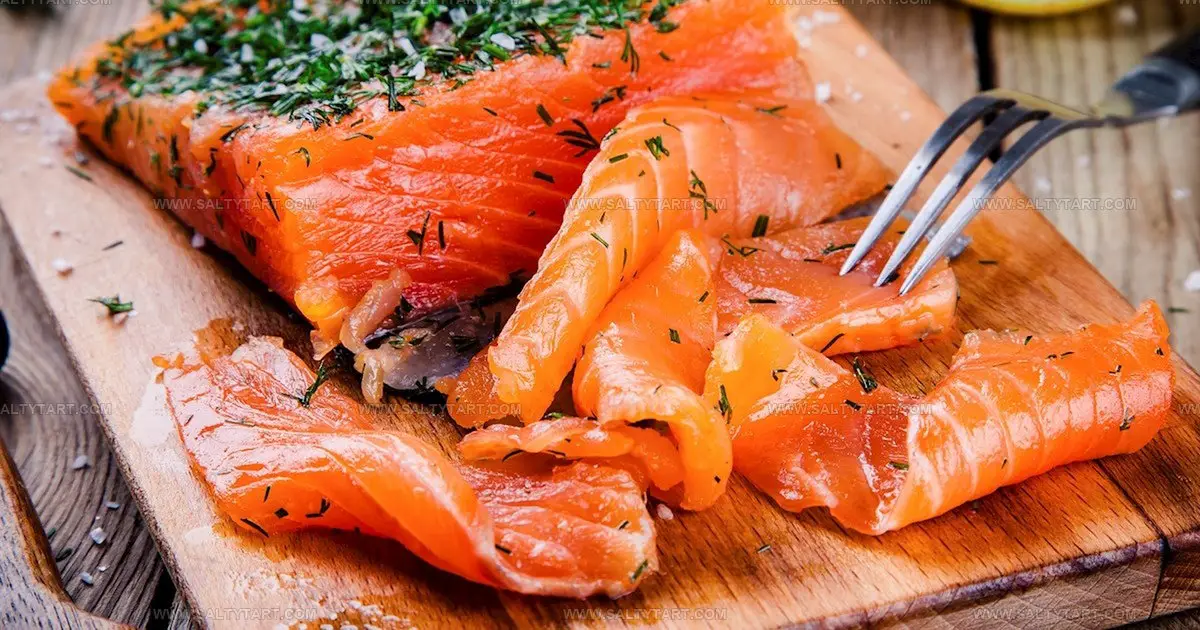
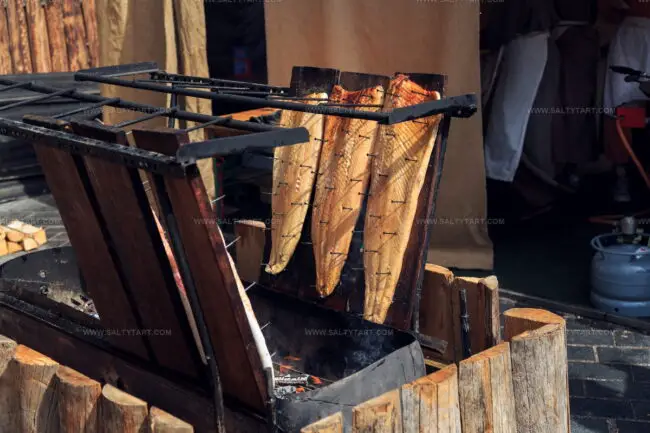
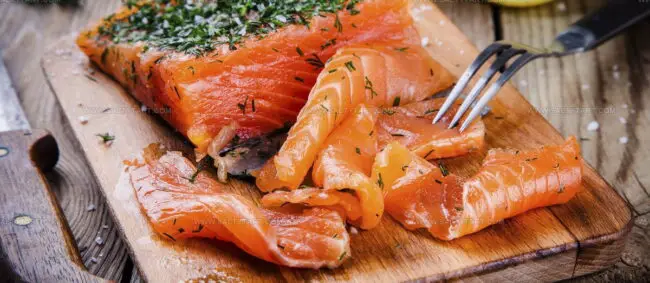
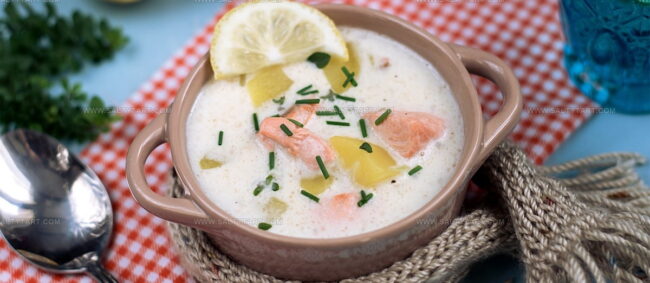
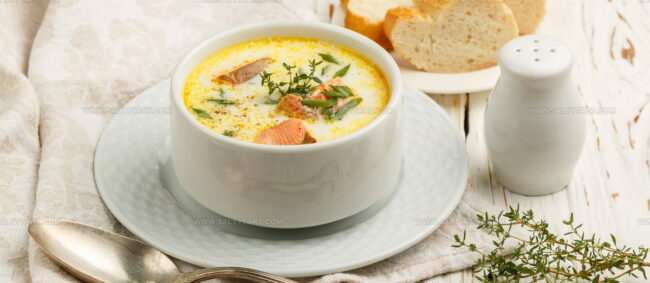
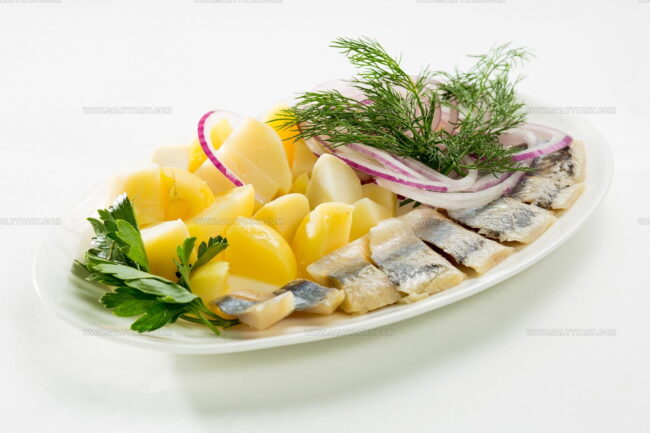

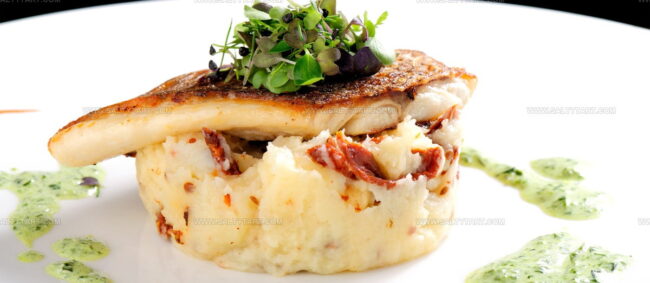
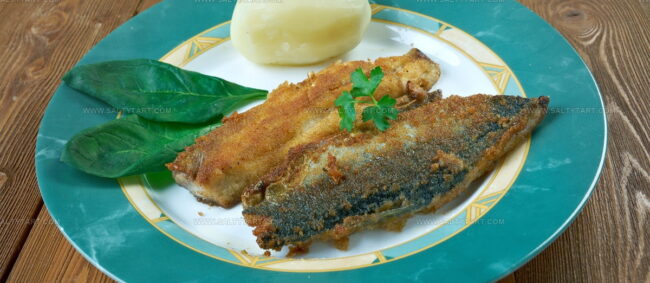
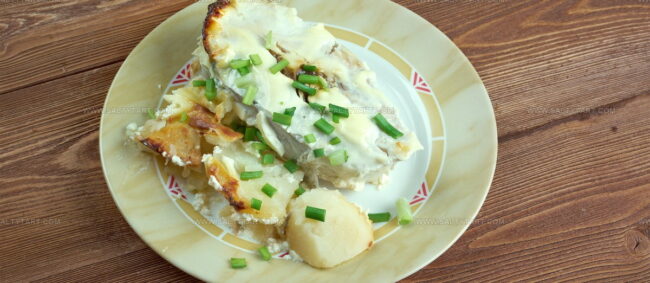
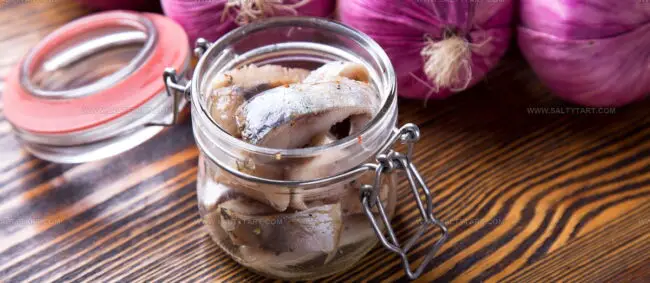
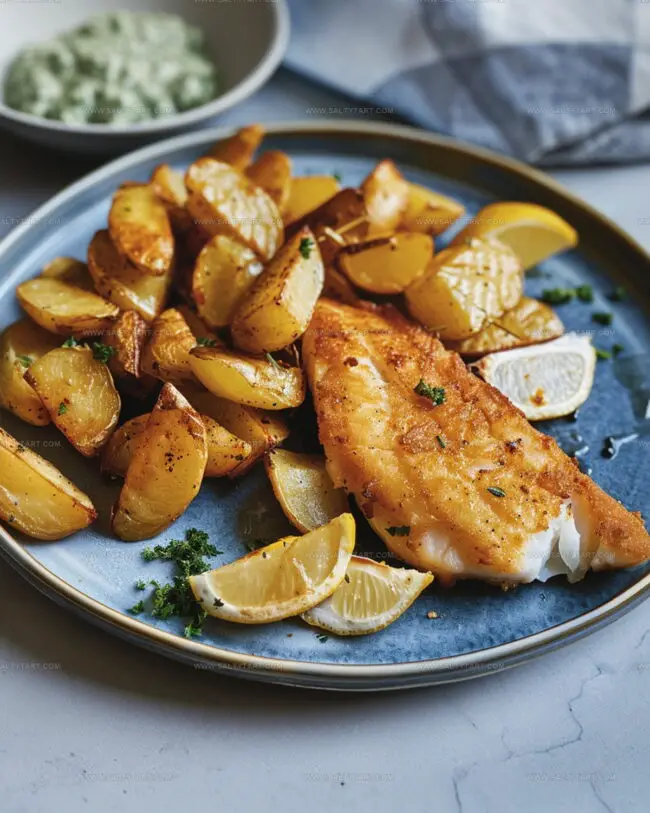
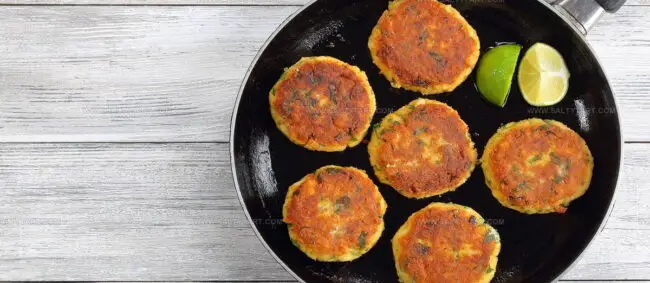
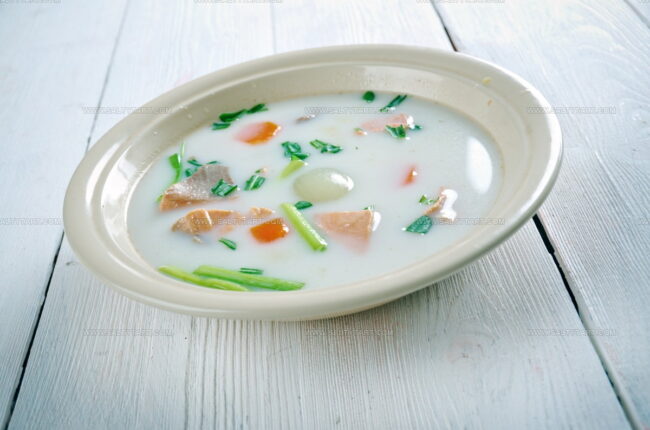
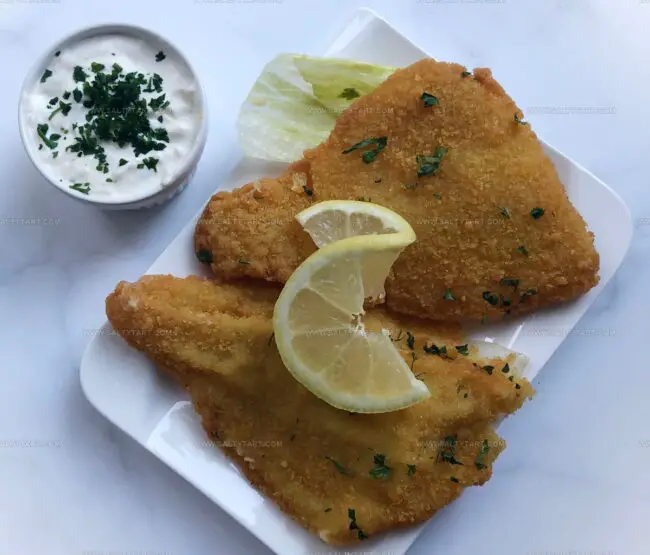

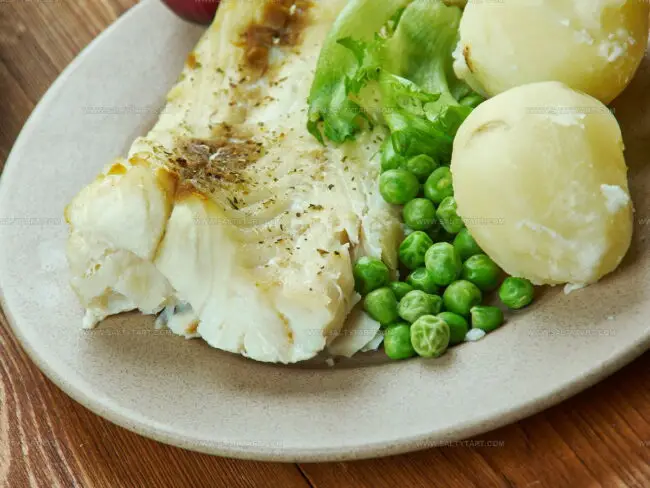
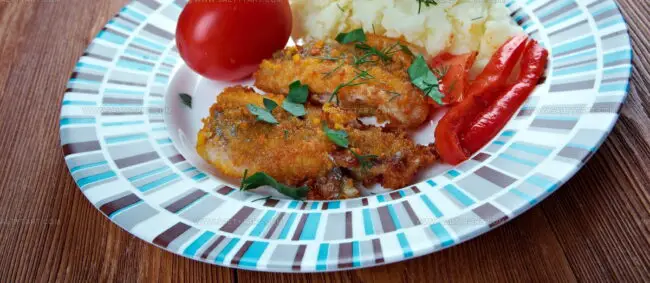
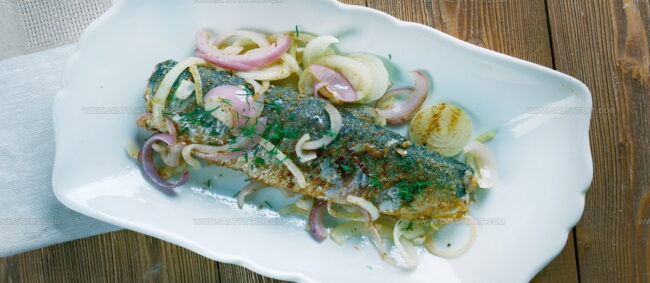
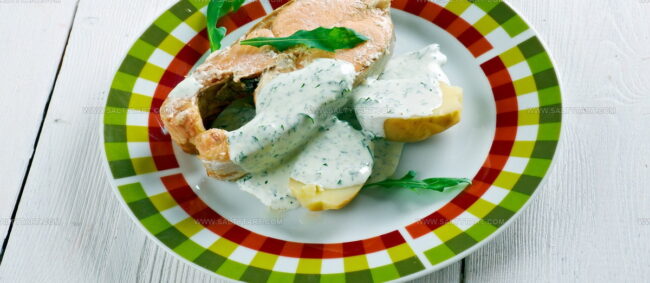

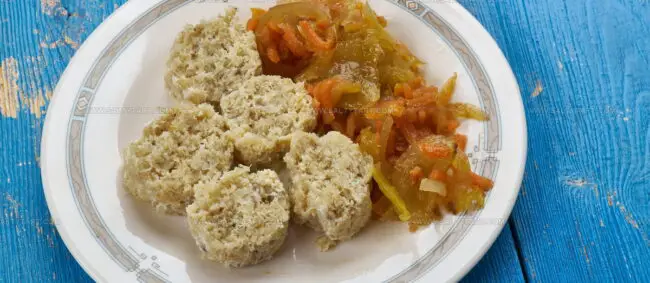
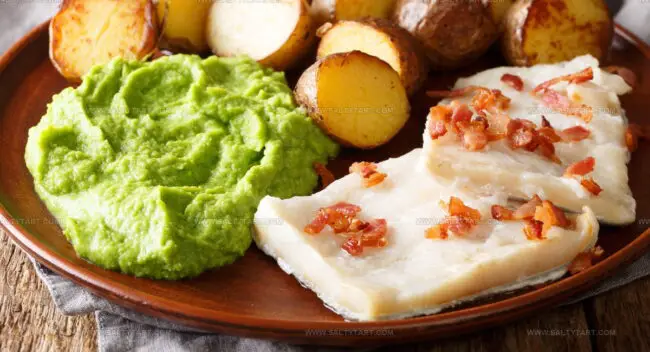
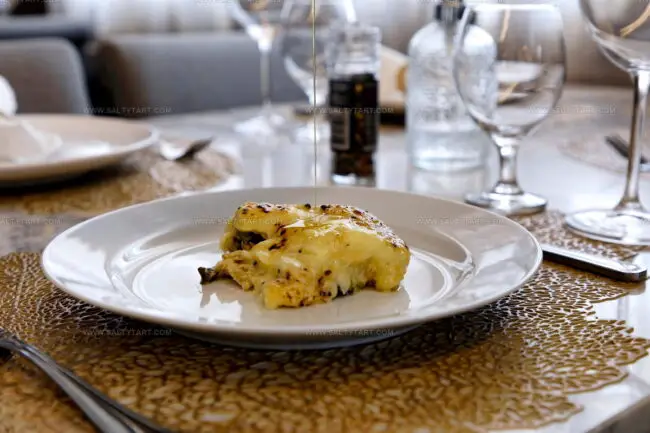
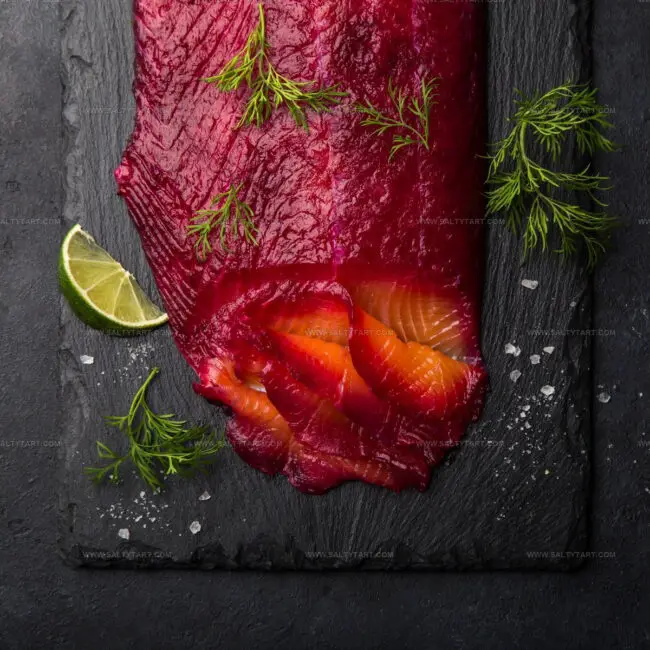
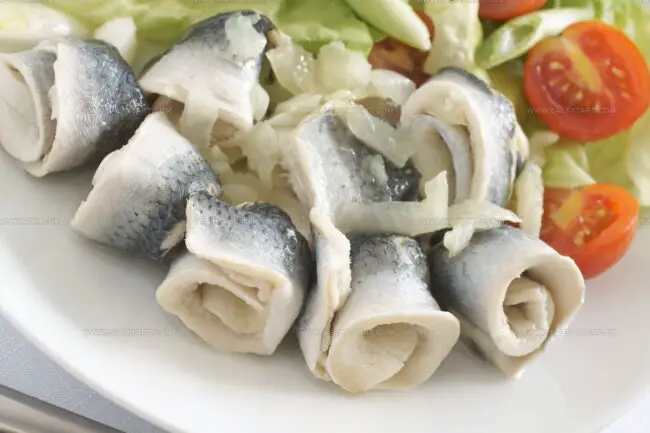
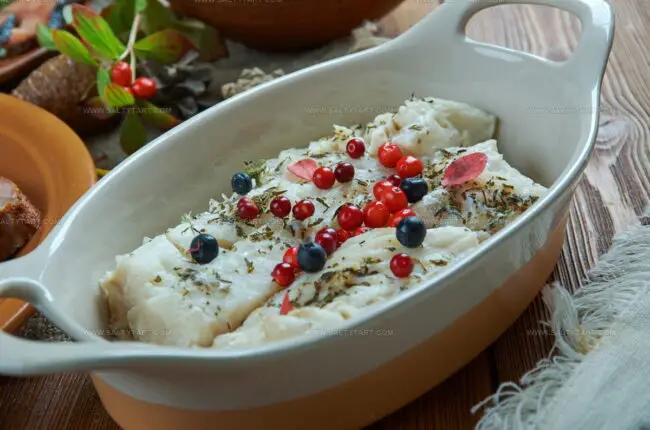
Jess Martinez
Contributing Recipe Writer & Nutrition Consultant
Expertise
Southwestern and Latin American cooking, Nutritional analysis and healthy recipe planning, Cultural food traditions, Modifying traditional dishes for better health
Education
Santa Fe Community College
Certificate in Culinary Arts
Focused on mastering the flavors and cooking methods of traditional Southwestern cuisine.
Jess’s love for bold, homegrown flavors led her straight into the world of Southwestern cooking and cultural nutrition.
After completing her Certificate in Culinary Arts at Santa Fe Community College, she made it her mission to show that good-for-you food can still taste incredible.
At saltytart.com, Jess shares vibrant, health-conscious recipes with roots in tradition but a fresh, modern twist. When she’s not testing new recipes, you’ll find her at local growers’ markets, tending her herb garden, or digging into food history books.